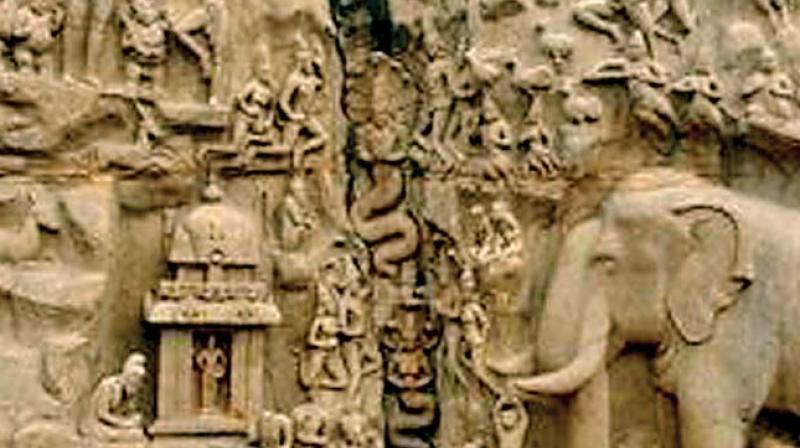Mahabalipuram stone sculpture gets GI tag

Chennai: The Geographical Indications Registry, Chennai, has accorded the Geographical Indications certificate to Tamil Nadu Government for ‘Mahabalipuram Stone Sculpture’.
In its application, the Tamil Nadu Handicrafts Development Corporation had submitted that the exquisite rock-sculpting techniques exhibited in Mahabalipuram/ Mamallapuram date back to early 7th century CE (Common Era). It is characterised by art and architecture that flourished in period of the Pallavas. Mamallapuram was named after the famous title of Narasimhavarma Pallava in the mid-seventh century.
Assistant Registrar, GI Registry, Chennai, Chinnaraja G. Naidu issued the coveted certificate to Tamil Nadu Handicrafts Development Corporation Limited (Poompuhar), Tamil Nadu Government, on Tuesday for Mahabalipuram Stone Sculpture under section 13 (1) of Geographical Indications of Goods (Registration and Protection) Act, 1999.
The Pallava dynasty, which ruled the area between 6 and 9th centuries A.D., is responsible for the creation of several wonderful edifices. Mahendravarman (AD 580-630), his son Narasimhavarman I Mamalla (AD 630-668), Paramesvaravarman (A.D. 672-'700) and Narasimhavarman II Rajasimha (A.D. 700-728) had contributed the most of sculptures in Mahabalipuram and developed the port town as a centre of art and architecture.
The art of sculpting in stone was introduced in the land of Tamils. This is, to date, the most definitive trait of the Pallava school of art and a lion's share of their art and architecture still remain in Mamallapuram.
Noted among them were open rock bas-relief sculptures, like the Great Penance Panel (also known as Arjuna's Penance or Descent of Ganga), the caves of Govardhanadhari and, Mahishasuramardini, the Jala-Sayana Perumal Temple, Pancha-Pandava Rathasm, Ganesh Ratha, Monolithic temples and shore temples. Mamallapuram also saw the advent of the Chola Empire in the 10th century. King Rajaraja Chola set up flower gardens with the intention to endow the temples of Mamallapuram with a variety of flowers.

